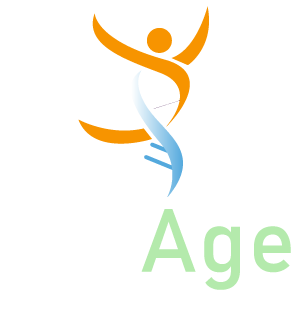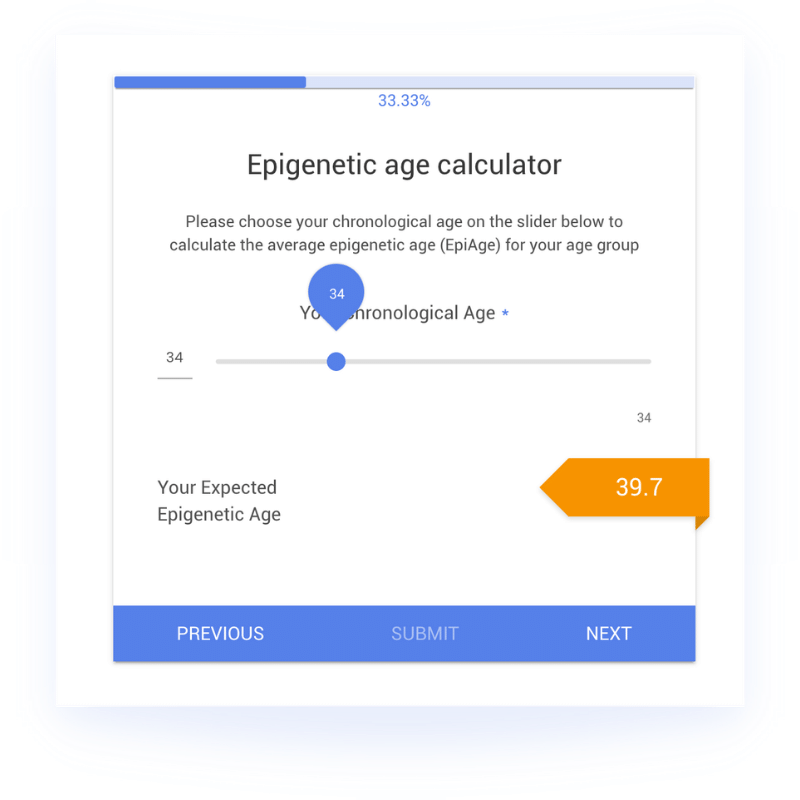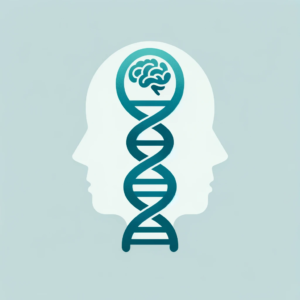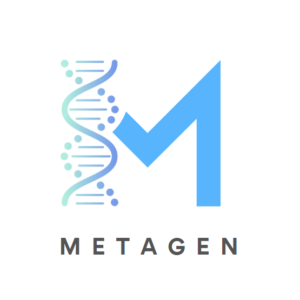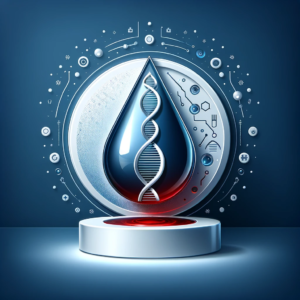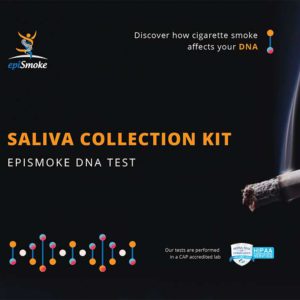The concept of “getting old together” takes on a new meaning with the discovery of epigenetic age. This reliable parameter allows scientists to assess an individual’s health state [1]. Differences between epigenetic age (DNAm) and chronological age can indicate serious disorders like cancer or neurological conditions [1,2]. DNAm can also be used to monitor beneficial changes, such as the impact of diet [3].
Epigenetic age is influenced by external factors, as demonstrated by current studies [4]. According to a recent paper by Lacal and Ventura [4], three groups of influences can potentially affect epigenetic age:
- Direct experiences: Encounters a person has throughout their life, such as changes in diet or environmental pollution.
- Experiences within: Influences the developing baby encounters while still in the womb. The mother’s diet, stress levels, and potential illnesses have long been known to impact DNAm [5].
- Cross-generational experiences: Experiences (e.g., hunger stress) encountered by our parents and grandparents that affect their current bodies and sex cells. These experiences are “coded” with epigenetic methylation marks and passed on from generation to generation [4,6].
In addition, genes also control the speed of gene methylation. For example, one genome-wide study discovered 21 genes influencing the methylation of areas used in the Horvath methylation clock [6].
These studies suggest that both external factors and a person’s genetic makeup influence epigenetic age. However, the extent to which these factors affect an individual’s epigenetic age remains unclear. Most current studies focus on links between specific conditions and DNAm and are limited by participant demographics [4].
To address this issue, scientists from the Center of Epidemiology and Biostatistics at the Melbourne School of Population and Global Health, University of Melbourne, Australia, conducted a study investigating factors that influence DNAm changes. They analyzed ten studies on genome-wide methylation, totaling 4,217 participants aged 0-92 years from 1,871 families, including:
This approach allowed researchers to consider both genetic and non-genetic factors. The team calculated DNAm using the Horvath DNAm clock measure [1] and determined the difference between chronological age and DNAm age.
Their findings revealed that the DNAm/chronological age difference can change with age and under certain circumstances. The gap is small in newborns and widens as people age. The DNAm age changes similarly in people who live together, such as siblings (especially twins), parents and children, and couples. However, these similarities decrease when people who previously lived together start living apart. The researchers also found that the level of DNAm age similarity depended on genetic similarities between people.
These findings indicate that:
- Monozygotic (MZ) twins: Twins developed from the same fertilized egg (highly similar genetically)
- Dizygotic (DZ) twins: Twins developed from two different fertilized eggs
- Siblings
- Parents
- Spouses
Although these findings require further research and rely on limited data, this study is the first comprehensive analysis of how DNAm age is determined by age, living environment, and genetic factors. Understanding the influences on epigenetic aging is crucial for applications in medical settings, such as personalized medicine
Future research should build upon these findings by investigating larger and more diverse populations. This would help to uncover additional factors that may contribute to DNAm age changes and enhance our understanding of the complex interplay between genetics and the environment. Moreover, examining the long-term effects of various interventions, such as lifestyle changes or medical treatments, on DNAm age could provide valuable insights into how we can influence the aging process and improve health outcomes.
In conclusion, this groundbreaking study highlights the importance of both environmental and genetic factors in shaping an individual’s epigenetic age. As our understanding of these influences grows, we can develop more targeted and effective strategies to promote healthy aging and prevent age-related diseases. This research has the potential to transform how we approach aging and healthcare, ultimately leading to a future where we can optimize our health and truly “get old together” in the best possible way.
References:
- Horvath S. (2013) DNA methylation age of human tissues and cell types. Genome Biol. 14(10):R115
- Levine M.E. et al. (2015) Epigenetic age of the prefrontal cortex is associated with neuritic plaques, amyloid load, and Alzheimer’s disease related cognitive functioning. Aging (Albany NY). 7(12):1198–211.
- Amenya, S. D. et al. (2020). Nutritional Epigenomics and Age-Related Disease. Curr. Dev. Nutr., 4(7); nzaa097. Available at: https://www.ncbi.nlm.nih.gov/pmc/articles/PMC7335360/. Retrieved March 16, 2021.
- Lacal, I, and R. Ventura (2018). Epigenetic Inheritance: Concepts, Mechanisms and Perspectives. Front. Mol. Neurosc. 11, 292. Available at: https://www.ncbi.nlm.nih.gov/pmc/articles/PMC6172332. Last accessed March 16, 2021.
- Geraghty, A.A.et al.(2015). Nutrition During Pregnancy Impacts Offspring’s Epigenetic Status—Evidence from Human and Animal Studies. Nutr. Metab. Insights, 8 (Suppl.1), 41-47.
- Heijmanns, B.T. et al. (2008). Persistent epigenetic differences associated with prenatal exposure to famine in humans. Proc.Natl.Acad. Sci. USA, 105(44), p17046-17049.
- Gibson, J. et al. (2019) A meta-analysis of genome-wide association studies of epigenetic age acceleration. Plos Genetics, 15(11), e1008104. Available at: https://pubmed.ncbi.nlm.nih.gov/31738745/. Last accessed March 16, 2021.
